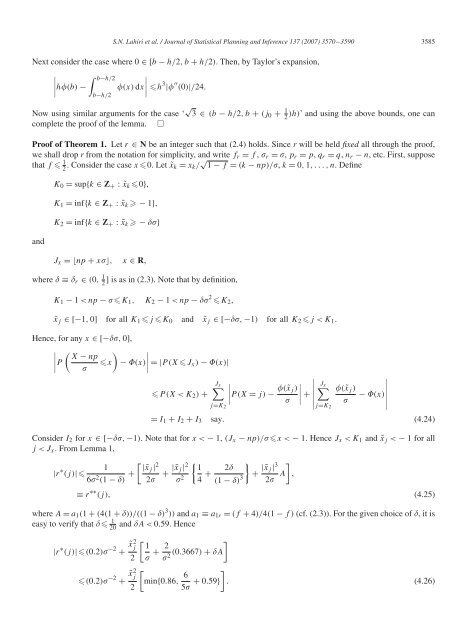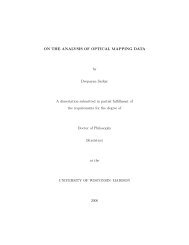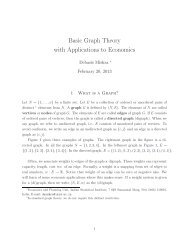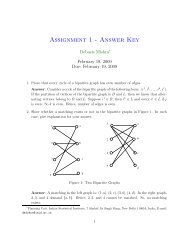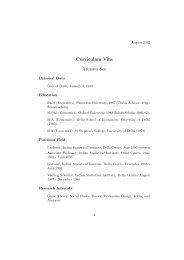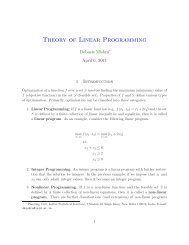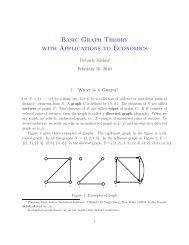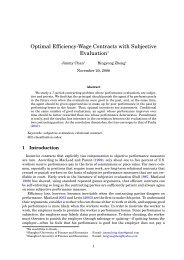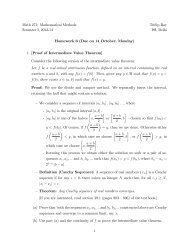Normal approximation to the hypergeometric distribution in ...
Normal approximation to the hypergeometric distribution in ...
Normal approximation to the hypergeometric distribution in ...
Create successful ePaper yourself
Turn your PDF publications into a flip-book with our unique Google optimized e-Paper software.
S.N. Lahiri et al. / Journal of Statistical Plann<strong>in</strong>g and Inference 137 (2007) 3570 –3590 3585<br />
Next consider <strong>the</strong> case where 0 ∈[b− h/2,b+ h/2). Then, by Taylor’s expansion,<br />
<br />
<br />
b−h/2 <br />
<br />
h(b) − (x) dx<br />
h3 | ′′ (0)|/24.<br />
b−h/2<br />
Now us<strong>in</strong>g similar arguments for <strong>the</strong> case ‘ √ 3 ∈ (b − h/2,b + (j0 + 1 2 )h)’ and us<strong>in</strong>g <strong>the</strong> above bounds, one can<br />
complete <strong>the</strong> proof of <strong>the</strong> lemma. <br />
Proof of Theorem 1. Let r ∈ N be an <strong>in</strong>teger such that (2.4) holds. S<strong>in</strong>ce r will be held fixed all through <strong>the</strong> proof,<br />
we shall drop r from <strong>the</strong> notation for simplicity, and write fr = f , r = , pr = p, qr = q, nr − n, etc. First, suppose<br />
that f 1 2 . Consider <strong>the</strong> case x 0. Let ˜xk = xk/ √ 1 − f = (k − np)/, k = 0, 1,...,n. Def<strong>in</strong>e<br />
and<br />
K0 = sup{k ∈ Z+ :˜xk 0},<br />
K1 = <strong>in</strong>f{k ∈ Z+ :˜xk − 1},<br />
K2 = <strong>in</strong>f{k ∈ Z+ :˜xk − }<br />
Jx =⌊np + x⌋, x ∈ R,<br />
where ≡ r ∈ (0, 1 2 ] is as <strong>in</strong> (2.3). Note that by def<strong>in</strong>ition,<br />
K1 − 1


